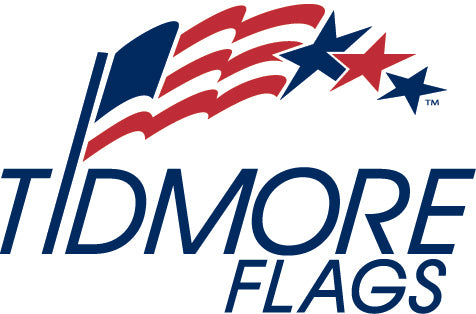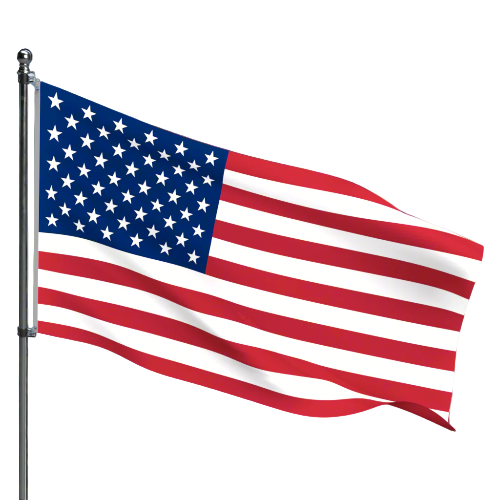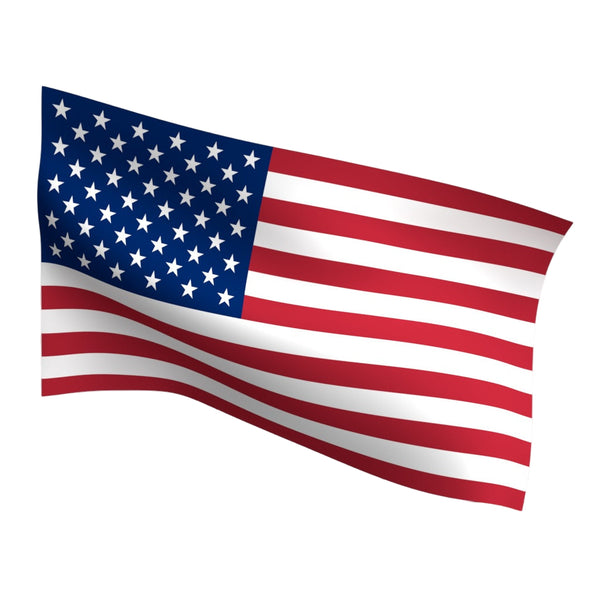United States Flag History: The Living Story of “Old Glory”

Share
The American flag—affectionately called Old Glory—is more than fabric and thread. It’s a story, a promise, and a reminder of how far this nation has come. Every stripe and every star tells a piece of United States flag history, tracing the evolution of the American flag from a cluster of determined colonies to one united country. When people search for the history of the US flag or the American flag through the years, they’re really asking how a simple banner became a living symbol of ideals that continue to shape our national life.
The First Flag: A Symbol of New Beginnings (1775)
Before the familiar stars and stripes came to life, there was the Grand Union Flag—also known as the Continental Colors. On December 3, 1775, Captain Esek Hopkins raised it aboard the USS Alfred. With 13 red and white stripes and the British Union Jack in the canton, it reflected both unity and a complicated allegiance. In the history of American flags, this banner sits at a crossroads: a visual statement that the colonies were standing together, even as they debated their future. This moment marks an early chapter in the American flag over time story, illustrating how design can mirror political reality.
The Birth of the Stars and Stripes (1777)
Everything changed on June 14, 1777—now celebrated as Flag Day—when the Second Continental Congress resolved: “That the flag of the thirteen United States be thirteen stripes, alternate red and white; that the union be thirteen stars, white in a blue field, representing a new constellation.” With this decision, the stars and stripes were born. For anyone exploring the history of the flag, this is the moment the new nation’s identity took visual form. The constellation wasn’t just decoration; it was a metaphor for a bold idea—independent states aligned in a shared sky.
Legend and Lore: Betsy Ross and the Origin of the US Flag
No journey through the story of the American flag is complete without the Betsy Ross tale. According to popular lore, a Philadelphia seamstress was asked by George Washington to stitch the first American flag, suggesting the now-famous five-pointed stars. Historians still debate the details, but the narrative endures because it captures the spirit of the period—resourceful citizens bringing a new symbol to life. Whether you call it myth or memory, the Betsy Ross story is stitched into the origin of the US flag and remains a touchstone in the history of U.S. flag discussions.
The Star-Spangled Banner and a Nation’s Song (1812–1814)
During the War of 1812, Mary Young Pickersgill sewed a massive 15-star, 15-stripe flag to fly over Fort McHenry. Through a night of bombardment, that flag remained—a sight that inspired Francis Scott Key to pen the poem that became our national anthem, “The Star-Spangled Banner.” This episode is more than a stirring scene; it marks a chapter in the American flag through history when the flag transformed from a military identifier into an emblem of endurance. For those looking up US flag 1945 to see other moments when the flag framed national triumph or sacrifice, Fort McHenry is the earlier, archetypal example of the flag’s power to steady the public’s heart.
American Flag Evolution: From 13 to 50 Stars
- 1795: Vermont and Kentucky added—flag expands to 15 stars and 15 stripes, a snapshot in the history of US flags.
- 1818: Congress standardizes 13 stripes for the original colonies and a new star for each state—crucial in the evolution of the US flag.
- 1912: President Taft formalizes the pattern of stars, establishing consistent proportions—an important footnote in the American flag history.
- 1959: Alaska becomes the 49th state, creating the short-lived 49-star flag—the American flag before Hawaii.
- 1960: Hawaii joins, and the nation adopts today’s 50-star flag, answering “when did the American flag get 50 stars?” (July 4, 1960).
These milestones chart the American flags over the years as the nation grew westward and welcomed new states. For anyone asking “how old is American flag?”—the Stars and Stripes date to 1777, while the 50-star design has flown since 1960.
What the Colors Mean—and Why They Endure
Symbols matter. The flag’s colors are often interpreted as follows: red for courage and sacrifice, white for purity and hope, and blue for vigilance, perseverance, and justice. The 13 stripes honor the original colonies, while the stars recognize every state in the union. Whether you search the history of the US flag, the history of USA flags, or the history of American flags, these meanings recur because they speak to ideals that outlast headlines and election cycles.
A Short Story from the Archives: A Flag, a Family, a Frontier
Imagine a family homestead on the frontier late in the 19th century. The wind is fierce, and supplies are scarce. Still, each morning, a small flag goes up on a makeshift pole. It’s not regulation-size; it’s patched and hand-stitched. Neighbors say the flag gave them their bearings—both literally on the wide prairie and figuratively in uncertain times. This quiet scene, repeated in different forms across two and a half centuries, explains the enduring appeal of the American flag evolution story. The flag doesn’t just record national milestones; it anchors daily life, signaling to newcomers and old-timers alike that they’re part of something larger than themselves.
Common Questions About American Flag History (Quick FAQ)
How many stars were on the first American flag?
Thirteen—one for each of the original states. This addresses “how many stars were on the first American flag” and “how many stars on the original American flag.”
How many stars are on the first American flag?
Again, 13—phrased another way for “how many stars are on the first American flag.”
When did the American flag get 50 stars?
July 4, 1960, after Hawaii’s admission—essential for the query “when did the American flag get 50 stars.”
What is the history of U.S. flag design?
From the Grand Union Flag (1775) to the 13-star “new constellation” (1777), brief expansion to 15 stripes (1795), a return to 13 stripes with stars added per state (1818), standardized layouts (1912), and the current 50-star pattern (1960). This covers “the history of the American flag,” “history of U.S. flag,” and “evolution of American flag.”
What about the American flag in 1945?
In World War II’s closing chapter—often searched as “US flag 1945”—images of the flag symbolized sacrifice, resolve, and victory, echoing earlier moments like Fort McHenry.
What’s the origin of the US flag?
It emerged during the Revolution: 13 stripes for the colonies and a canton of stars representing a “new constellation.” Searchers looking for “origin of US flag” usually want that 1777 turning point.
Across the Centuries: American Flag Through the Years
The flag’s journey mirrors the country’s—expansion, conflict, compromise, and renewal. It appears in classrooms and courtrooms, on front porches and federal buildings, at jubilant parades and solemn funerals. Astronauts have carried it into space; athletes have raised it on global stages. When people explore the American flag over time or the US flag through the years, they often discover that the flag’s power lies in paradox: bold and simple, yet layered with meaning; constant in its outline, yet evolving as the nation grows.
Counting the Stars: A Closer Look
To clear up recurring questions: “how many stars were on the first American flag?” and “how many stars are on the first American flag?” both point to the same answer—13. That number matters because it connects today’s 50-star field to the nation’s earliest experiment in self-government. Meanwhile, the shift to 50 stars in 1960 marks a different kind of milestone—the completion of a continental vision and the recognition that the union can embrace distant frontiers. These touchpoints help readers navigate searches like “the American flag history,” “the history of the American flag,” and “history American flag.”
Why This History Still Matters
Understanding the evolution of the American flag isn’t a niche hobby; it’s a window into the nation’s values. Each change—whether adding states, standardizing proportions, or affirming respectful display—represents a consensus about who we are. If you’ve ever asked “American flag through history” or “history of USA flags,” you already sense that the flag is a compass: it points to our founding aspirations while reminding us that unity requires continual work.
From Then to Now: A Living Emblem
Today, the flag continues to wave over homes, schools, courthouses, stadiums, and civic gatherings. It appears at moments of celebration and protest alike—a sign that participation is part of the promise. However you encounter the flag—folded at a memorial, draped on a balcony, or lifting in a dawn breeze—it invites the same question: what can we do, together, to live up to the ideals it represents? That’s why searches like “American flag evolution” and “American flags over the years” remain popular: the past clarifies the present.
Keep Exploring
If this overview sparked your curiosity about United States flag history and the evolution of the US flag, consider diving deeper into original documents, museum collections, and reputable historical resources. And if you’re looking to display the flag at home, school, or work, choose a quality, USA-made banner and follow respectful display practices—because honoring the flag honors the people and ideals behind it.
What the Colors Mean
Red stands for courage and sacrifice; white represents purity and hope; blue symbolizes vigilance, perseverance, and justice. The 13 stripes honor the original colonies, while the 50 stars represent every state. These meanings echo throughout the history of the US flag and the American flag through history.
American Flag Through the Years: A Living Symbol
Today, the flag flies over schools, homes, courthouses, and stadiums. It’s been carried into space, draped over heroes, and raised at both celebrations and protests. Across the American flags over the years narrative, its enduring presence reflects freedom, resilience, and the shared promise of a nation.
FAQ: The History of U.S. Flag — Quick Answers People Ask
How many stars were on the first American flag?
13 stars for the 13 original states—this addresses “how many stars were on the first American flag” and “how many stars on the original American flag.”
How many stars are on the first American flag?
Also 13—phrased another way for “how many stars are on the first American flag.”
When did the American flag get 50 stars?
July 4, 1960, after Hawaii’s statehood—key for the search “when did the American flag get 50 stars.”
What is the history of U.S. flag design?
From the Grand Union Flag (1775) to the 13-star “new constellation” (1777), expansions to 15 stripes (1795), a return to 13 stripes (1818), formalized star layout (1912), and the final jump to 50 stars (1960). This covers “history of U.S. flag,” “the history of the American flag,” and “evolution of American flag.”
How old is the American flag?
The Stars and Stripes were adopted in 1777. Readers asking “how old is American flag” are really asking about its origins on June 14, 1777.
What’s the origin of the US flag?
It emerged from the Revolutionary period: 13 stripes for the colonies and a canton of stars representing a “new constellation.” See “origin of US flag.”
American Flag Over Time: Why This History Still Matters
Understanding American flag evolution—from the history of USA flags to the modern design—connects us to the principles that shaped the nation. The flag’s journey mirrors America’s: striving, expanding, and uniting. That’s why “American flag through the years” remains one of the most searched topics for learners, families, and history fans alike.




